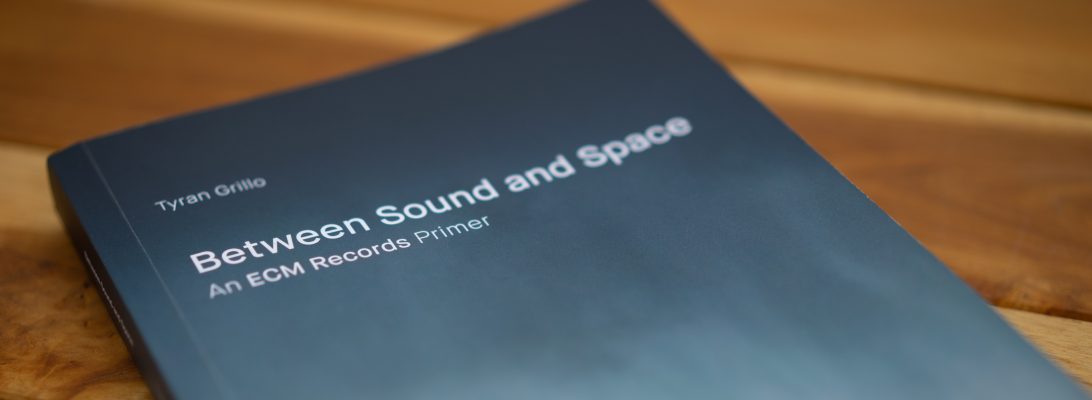Sinikka Langeland
The half-finished heaven
Sinikka Langeland kantele, vocals
Lars Anders Tomter viola
Trygve Seim tenor saxophone
Markku Ounaskari percussion
Recorded January 2013 at Rainbow Studio, Oslo
Engineer: Jan Erik Kongshaug
Produced by Manfred Eicher
Sinikka Langeland is that rare artist whose albums feel as if they’ve always been with us, only it takes the divine intervention of recording them to make them perceivable in this dimension. As a virtuoso of the kantele, a Finnish table harp of the psaltery family, she is unparalleled. As a singer and composer, likewise. Yet beyond her physiological understanding of the relationship between text and arrangement, beyond her sonic woodblock printing of an ancient yet personal mythology, it is her willingness to grow into new territory with every project that makes her visions feel so ingrained. And in that respect she continues her rainbow chase toward the achievement of a settled style, freshening the colors of that spectrum by virtue of her very own.
Langeland owes her evolution in part to the respect of collaborating musicians, whom over the years have grown and changed as the seasons. Out of previous ECM sessions she retains, from Maria’s Song (one of her most unexpected and shatteringly magnetic creations), violist Lars Anders Tomter and, from The Land That Is Not, saxophonist Trygve Seim and percussionist Markku Ounaskari. The idea for this album had been brewing since her debut with the label, after which producer Manfred Eicher suggested a solo kantele outing with minimal singing. The half-finished heaven is the compromise: a program of mostly instrumentals from which three songs rise like spruce trees against a listening sky.
The words come from Nobel Prize-winner Tomas Tranströmer, whose naturalist poetry also gives the album its name. The instrumental set-up of the title song feels like sitting down for a meal with someone you can only hope to see again. The sting of finality in the air is as strong as the drink at your lips as you try to focus on the good memories, which come marching through to the beat of Ounaskari’s snare. There is an intensely cinematic quality to the scene before Langeland silences the cameras with her vocal truth. “Each man is a half-open door,” she sings, “leading to a room for everyone,” and with that single statement the world awakens to the possibility of enjoying the God-given light in peace with others.
In captivation of rising arpeggios from the kantele, “The light streams in” unfolds far less checkered table cloths of expectation:
Outside the window, the long beast of spring
the transparent dragon of sunlight
rushes past like an endless
suburban train—we never got a glimpse of its head.
Langeland’s music is inherently attuned to just this sort of spatial and temporal mixture. Every touch of her instrument thus produces an observational moment, bending notes like branches aching with fruit. Ensnared as they are by sunlight so intense that it “makes the statues blink,” Tomter’s grave double stops drag arms along a wasted earth once filled with beautiful mourning yet which is now only mournfully beautiful. And just over the album’s central cusp is “The tree and the sky,” which at surface level links its titular metaphor to us and nature, while at the biological level erasing any distinction between the two. The viola moves like that tree, an Ent-like presence living out of time but in deep connection to all things material. Langeland’s (bene)diction here is a fairytale come to life for those who will believe it.
In the absences of words, we gain knowledge of absences. Throughout the opening “Hare rune,” for instance, we may notice that Ounaskari’s forested drum speaks as much to the effect of branches as to the sky feathered between them. Even the kantele—in this case, a 15-string version—twirls its ribbons of mercury to draw attention to the resulting chain of circles. Seim’s breathy tenor, meanwhile, sounds like an animal horn blown from a great distance, so that by the time it reaches us it is barely clinging to its note. “The blue tit’s spring song” is another 15-stringed tune, one that features goblet drum for a distinctly brighter sound.
With the additional exception of “Hymn to the fly,” a miniature played on 10 strings, the rest of the album features the 39-string concert kantele, which like a piano is equipped with a sustain pedal that allows for longer decay. Such capabilities of resonance enhance “The white burden,” an old piece from 1978 now making its first appearance on record, but more so the album’s faunal illustrations. Whether trailing feathers in “The woodcock’s flight” and “Caw of the crane” or reveling with “The magical bird” (modeled after a traditional polsdans from Finnskogen), each plucked string is hollow-boned and attuned to any change in wind direction. As in the delightful “Animal miniatures,” we may feel the way of every flit and burrowing.
To hear Langeland, be it through strings or song, is to be healed and know the way of holistic music. Like the ancient materia medica, her runic ways turn plants into cures and animals into protections. She is by no exaggeration a living treasure, and this may just be her most invaluable relic yet.
(To hear samples of The half-finished heaven, click here.)




Wow – this is a must for me! The combination of Tranströmer and Trygve Seim + kantele is irresistible. What a coincidence to see this just after I blogged about blue tits too.